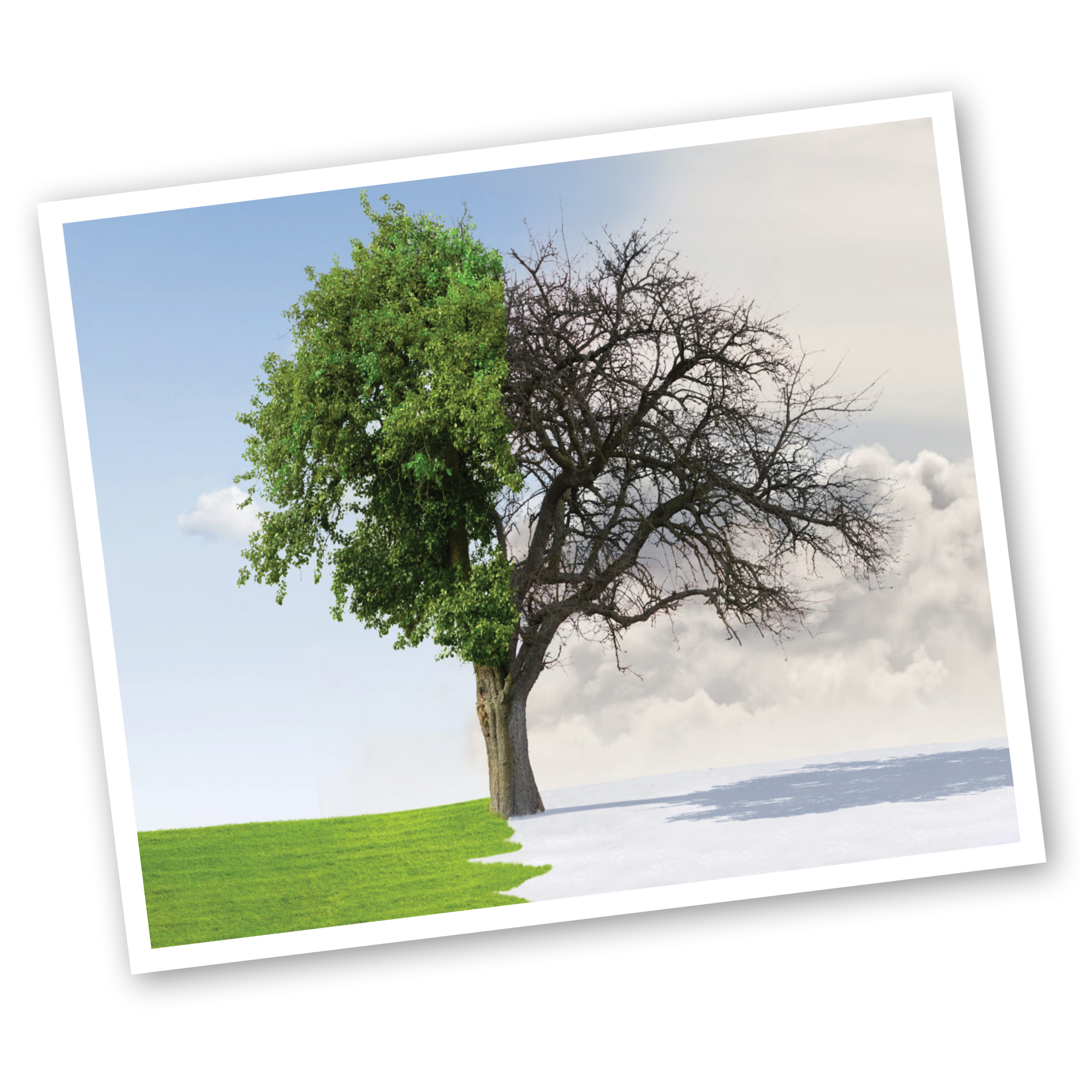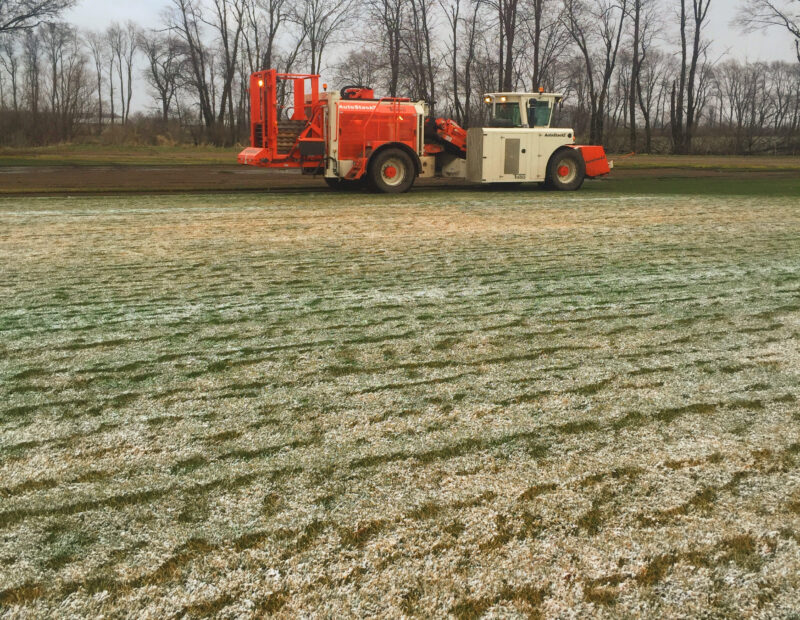It is common for sodded lawns to be brown the first spring after sodding. This is a natural occurrence and does not indicate any problems with your lawn. You will probably remember that your lawn was a beautiful dark green going into winter. If there is plenty of snow during the winter and it melts in late February, the lawn will still be quite green in the spring. If there is little snow cover and temperatures fall below 20 degrees for several nights, the lawn will turn brown. The colder the temperatures and the more cold nights, the more brown turf will be produced. Often parts of the lawn that are protected or had snow on it for longer will remain green.
Turf grass researchers do not know exactly why grass turns brown in the winter. Because it is not a serious or fatal problem, money for research has not been allocated. One researcher has theorized it is because the root system is not completely developed. Roots are where the plant stores carbohydrates that are necessary for early green growth. That would explain why lawns that were sodded in summer and not fertilized in the fall are browner than lawns that received fall fertilizations. Fall fertilizations promote root growth and more carbohydrate storage.
Homeowners have two things they can do to minimize brown grass. First, select and begin a good fertilization program. Early fertilization speeds the process of greening up. Secondly, mow the lawn low enough to trim the brown tips off in late March or early April when the threat of cold nights below 20 degrees has passed. The brown tips will fall into the grass, and a small amount of new leaf growth, when it occurs, will be visible and make the lawn look better.
Your lawn will probably be the most brown during the first winter after installation. In succeeding years, your lawn will be a bit greener. However, weather will always be the deciding factor.

It is common for sodded lawns to be brown the first spring after sodding. This is a natural occurrence and does not indicate any problems with your lawn. You will probably remember that your lawn was a beautiful dark green going into winter. If there is plenty of snow during the winter and it melts in late February, the lawn will still be quite green in the spring. If there is little snow cover and temperatures fall below 20 degrees for several nights, the lawn will turn brown. The colder the temperatures and the more cold nights, the more brown turf will be produced. Often parts of the lawn that are protected or had snow on it for longer will remain green.
Turf grass researchers do not know exactly why grass turns brown in the winter. Because it is not a serious or fatal problem, money for research has not been allocated. One researcher has theorized it is because the root system is not completely developed. Roots are where the plant stores carbohydrates that are necessary for early green growth. That would explain why lawns that were sodded in summer and not fertilized in the fall are browner than lawns that received fall fertilizations. Fall fertilizations promote root growth and more carbohydrate storage.
Homeowners have two things they can do to minimize brown grass. First, select and begin a good fertilization program. Early fertilization speeds the process of greening up. Secondly, mow the lawn low enough to trim the brown tips off in late March or early April when the threat of cold nights below 20 degrees has passed. The brown tips will fall into the grass, and a small amount of new leaf growth, when it occurs, will be visible and make the lawn look better.
Your lawn will probably be the most brown during the first winter after installation. In succeeding years, your lawn will be a bit greener. However, weather will always be the deciding factor.

Updated 12/5/25
Red Hen Turf Farm’s
2025 Sod Harvesting Season
has OFFICIALLY ENDED
as of 12/5/25
due to SNOW / Precipitation and Unfavorable Field Conditions.
We had hoped to keep going until 12/19/25, but Mother Nature did not get that Memo, apparently :)
* * *
If you’re reading this in early 2026 and wonder when we might start back up again, a quick call will confirm our
SOD HARVEST FORECAST
– 574-232-6811 –
is the number to call.